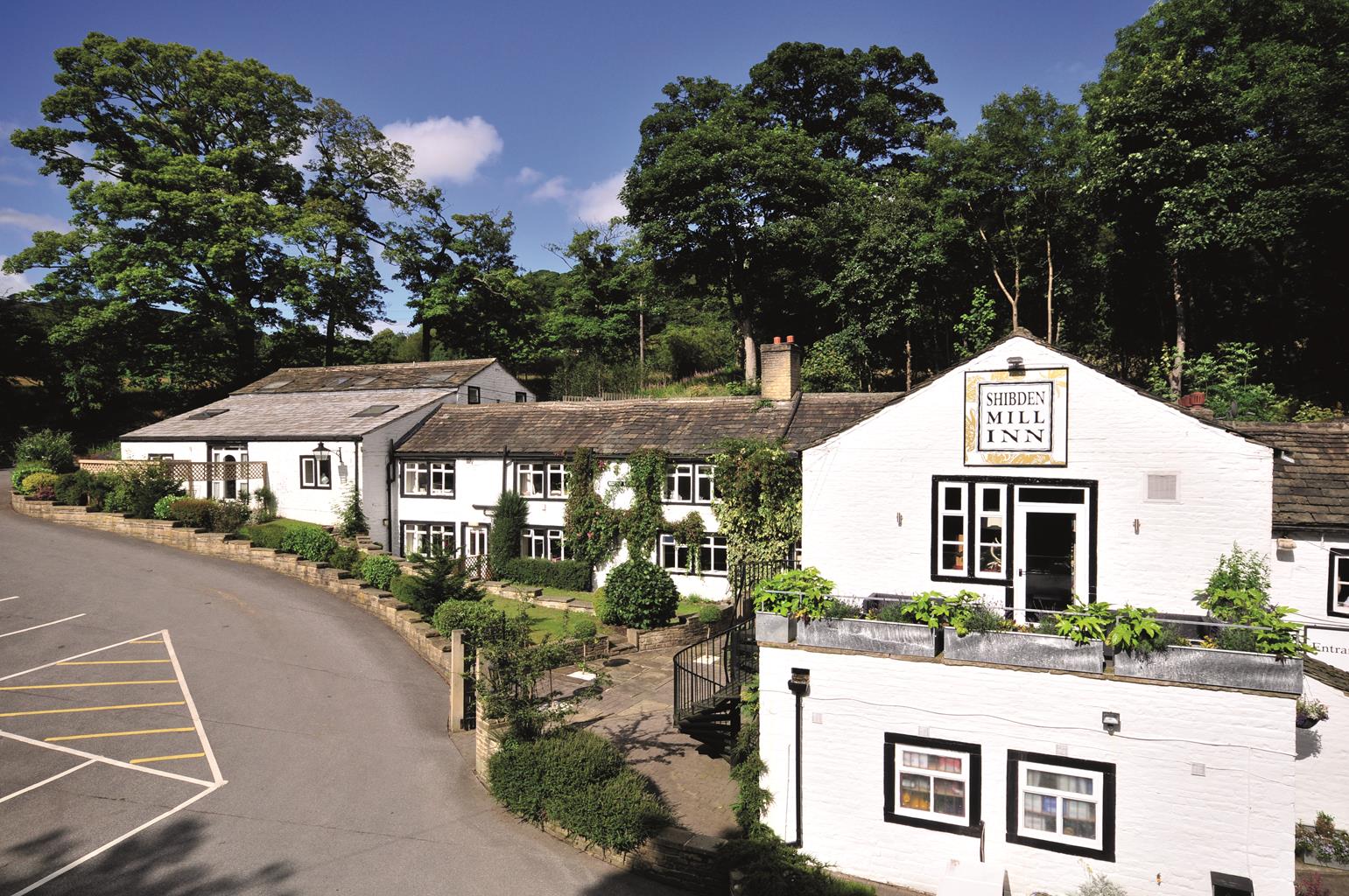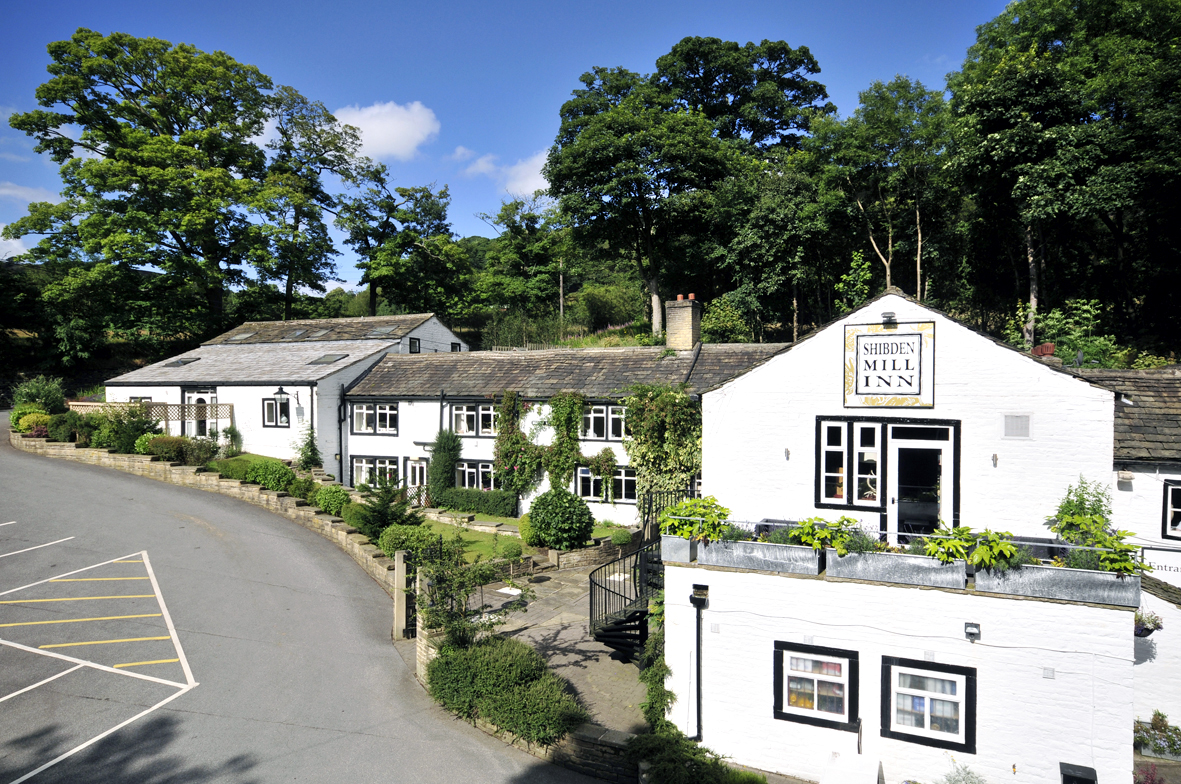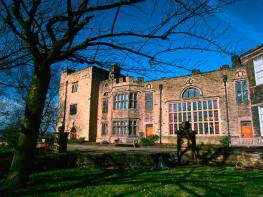Constructed around a 19th-century house, this stylish, modern hotel enjoys a peaceful location…
Tong and Fulneck's Moravian settlement

A little rural oasis between Leeds and Bradford, and some of the finest Georgian architecture in Yorkshire.
5 miles (8kms)
About the walk
West Yorkshire has some rugged moorland walks, where you can lengthen your stride and escape the crowds. Other walks – such as this one – are to be treasured for being so close to town.
Fulneck Moravian settlement
The Pennine areas of Yorkshire have long been strongholds for non-conformist faiths. The harsh conditions and uncertain livelihoods produced people who were both independent of mind and receptive to radical ideas. Some travelling preachers could fill churches, with congregations overflowing into the churchyard. The Revd William Grimshaw of Haworth, for example, was one such tireless orator. He was always prepared to ride many moorland miles to preach the gospel and – if necessary – to chase drinkers out of the pubs and into church with a horse whip. Religion was a passionate business in the 18th century and John Wesley found converts here, and imposingly austere Methodist chapels sprang up in the smallest village.
Just to the south of Pudsey is Fulneck, where another non-conformist church found a home. Pre-Reformation dissenters from the Roman Catholic Church, the Moravians, originated in Bohemia in the 15th century, and soon spread to Moravia. During the 18th century, Moravian missionaries were sent overseas to spread the word and one such group arrived in England. They were actually on their way to America, but a meeting with Benjamin Ingham, a Church of England clergyman, encouraged them to settle here.
In 1744 Ingham presented the Moravians with a 22-acre (9ha) estate for them to use as a centre for their work in Yorkshire. At first they called the settlement Lambshill then Fulneck, commemorating a town of that name in Moravia. It is a splendid site, high on a ridge with a fine view across Fulneck Valley. The Moravians constructed a street on the ridge, and built a collection of handsome buildings along it. Soon there was a chapel, large communal houses (for single brethren, single sisters and for widows), family houses, a shop, inn, bakery and workshops forming a close-knit, self-sufficient settlement. John Wesley visited Fulneck in 1780 and was suitably impressed by their hard work and independence.
Two schools were built (one for boys, one for girls), originally just for the children of Moravian Brethren. But they were eventually transformed into the fee-paying boarding schools that still exist today. The most famous pupil was probably Richard Oastler who, in the 19th century, campaigned against 'child slavery' in Yorkshire's textile mills.
As close as it is to Pudsey, this terrace of splendid Georgian buildings has retained its air of separateness. The exposed site has discouraged further building, so what you see today is very much as the Moravians originally envisaged. Take the time to explore this evocative place and perhaps visit the museum (open Wednesday and Saturday afternoons), which explains the history of the Moravian Church and this unique Yorkshire outpost.
Tong and Cockers Dale
Apart from visiting the Moravian Community, this short walk also takes you through two delightful valleys: Fulneck Valley and Cockers Dale. In these wooded dells, criss-crossed by ancient packhorse tracks and hollow ways, you feel a long way from the surrounding cities. On an attractive ridge between these valleys is the village of Tong (the name means 'a spit of land'), which has kept its traditional shape and character, and avoided being absorbed by creeping suburbia.
Walk directions
From the village hall, walk down past The Greyhound pub and turn left into Keeper Lane. Becoming a track beyond a gate, it wends downhill to a footbridge below a confluence of streams.
Cross and, ignoring the track ahead, swing left on the Leeds Country Way with the main beck on your left. Exiting a wood, keep ahead across a field. Leaving over a stile, turn sharp right up a path away from a bridge. Meeting a track, follow it right and later on, right again to come out on the bend of a lane opposite the Bankhouse inn.
Follow the road right past 20th-century housing into the Fulneck Moravian settlement, where the fine Georgian buildings command superb views across the valley. Just past Zachary's restaurant turn right beside the main school building, following a sign to Fulneck Golf Course. Keep right again but, passing the corner of the Robinson Building, watch for a stepped path leaving on the left. It heralds a delightful sunken lane that drops steeply within a dense line of trees across the golf course. Emerging at the bottom, cross a fairway to rejoin Pudsey Beck. Follow it left.
Leaving the golf course, keep going over stiles to a ruined mill. Dog-legging right and left, the path continues through a succession of fields and scrubland, straightening the course set by the accompanying squiggling beck. Finally, a walled path brings you out on to a lane.
Go right, past a converted mill, to a T-junction. Cross the main road and take a waymarked footpath between gateposts into Sykes' Wood. Immediately bear right, through a gap (signed 'Leeds Country Way'). Follow the path downhill, soon with Tong Beck. After walking about 0.5 miles (800m) through woodland, take a footbridge over the beck and bear left by the boundary up to a kissing gate. Follow a path along the edge of a field, then through woodland. Keep left, when the path eventually forks to a gate. Ignoring side paths, remain on this bank of the stream until you reach a kissing gate.
Through that, turn away from the river along a rising track, Springfield Lane. When you meet a road, go left to arrive back in Tong village.
Additional information
Ancient causeways, hollow ways and field paths, many stiles
Mostly wooded valleys
Keep on lead across golf course and by livestock
OS Explorer 288 Bradford & Huddersfield
Lay-by in Tong village, near village hall, or on edge of village
None on route
WALKING IN SAFETY
Read our tips to look after yourself and the environment when following this walk.
Find out more
Also in the area
About the area
Discover West Yorkshire
Everybody knows that Yorkshire has some special landscapes. The Dales and the Moors first spring to mind, but what about West Yorkshire? That’s Leeds and Bradford isn’t it? Back-to-back houses and blackened mills… Certainly if you had stood on any of the hills surrounding Hebden Bridge a hundred years ago, and gazed down into the valley, all you would have seen was the pall of smoke issuing from the chimneys of 33 textile mills. But thankfully, life changes very quickly in West Yorkshire. The textile trade went into terminal decline, the mills shut down forever and in a single generation Hebden Bridge became a place that people want to visit.
The surrounding countryside offers walking every bit as good as the more celebrated Yorkshire Dales; within minutes you can be tramping across the moors. And this close proximity of town and country is repeated all across West Yorkshire. There’s such diversity in the area that you can find yourself in quite unfamiliar surroundings, even close to places you may know very well. Take time to explore this rich county and you will be thrilled at what you find to shatter old myths and preconceptions.
Nearby stays
Restaurants and Pubs
Nearby experiences
Recommended things to do
Why choose Rated Trips?
Your trusted guide to rated places across the UK
The best coverage
Discover more than 15,000 professionally rated places to stay, eat and visit from across the UK and Ireland.
Quality assured
Choose a place to stay safe in the knowledge that it has been expertly assessed by trained assessors.
Plan your next trip
Search by location or the type of place you're visiting to find your next ideal holiday experience.
Travel inspiration
Read our articles, city guides and recommended things to do for inspiration. We're here to help you explore the UK.













